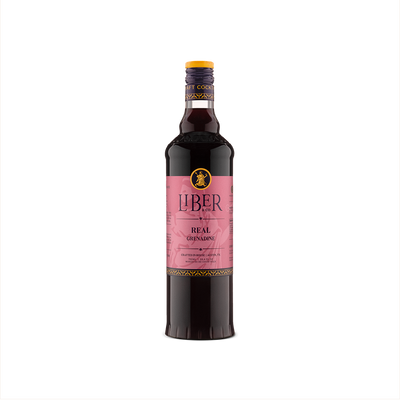Grenadine
What is Grenadine?
Grenadine is a sweet, ruby-red Fruit Syrup traditionally made from pomegranate juice and sugar, though many commercial versions today use artificial flavors and high fructose corn syrup. True grenadine gets its name from the French word "grenade," meaning pomegranate, and delivers a tart-sweet flavor with floral notes that adds both color and complexity to classic cocktails like the Shirley Temple and Tequila Sunrise. What defines authentic grenadine is its pomegranate base and balanced sweetness that complements rather than overwhelms other cocktail ingredients.
Explore Our Grenadine Selection
Featured Grenadine Recipes
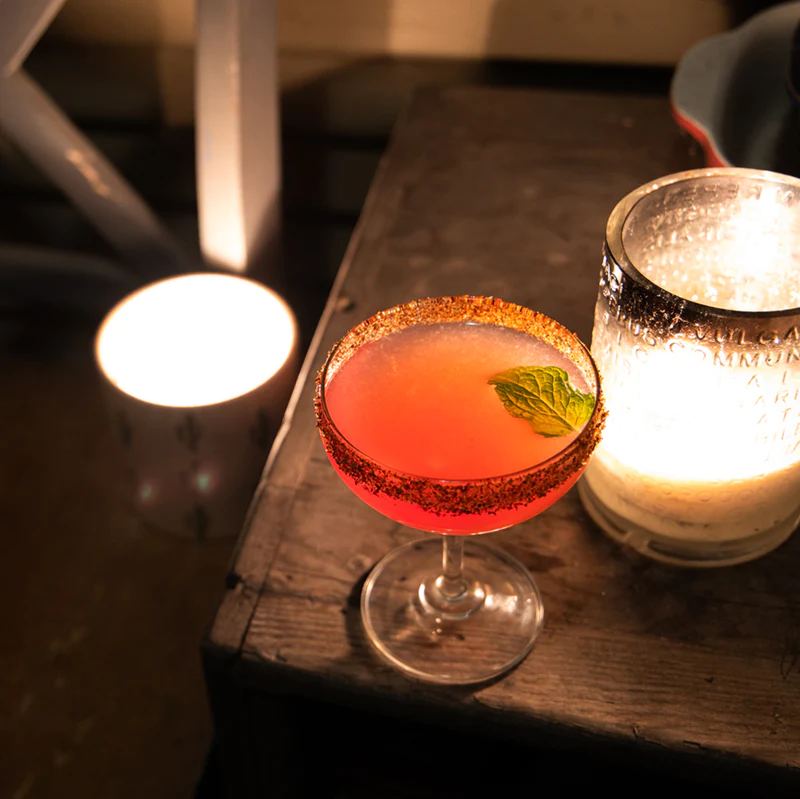
Texas Sunburn
Ingredients:
- 1.5 oz of mezcal, like Pierde Almas La Puritita Verdá Mezcal
- .5 oz Chareau Aloe Liqueur
- .5 oz Ancho Chile Reyes Liqueur
- .5 oz Liber & Co Real Grenadine Syrup
- .75 oz freshly squeezed lemon juice
Directions:
- Add all ingredients to a cocktail shaker with cubed ice.
- Shake hard for 20 seconds.
- Strain into a chilled coupe, rimmed with tajin if you’re feeling extra!
- Garnish with a mint leaf
Pomegranate Rye Punch
Ingredients:
- 9 oz Liber & Co Grenadine
- 18 oz rye whiskey, like Rittenhouse Rye
- 6 oz St. George Spiced Pear Liqueur
- 9 oz lemon juice
- 18oz chilled water
Directions:
- Add all ingredients to the punch bowl, stir.
- Garnish according to your preference, lemon wheel with studded cloves, orange slices, cinnamon stick, etc.
- Add ice 3-5 minutes before it is served.

The Safari Julep
Ingredients:
- 1.5 oz scotch, like The Famous Grouse
- .25 oz overproof Demerara rum, like Hamilton 151
- .25 oz gold rum, like Hamilton Jamaican Pot Still Gold Rum
- 1 teaspoon grenadine, like Liber & Co. Real Grenadine
- 1 teaspoon chai syrup*
- fresh mint and a curry leaf
Directions:
- Prepare the chai syrup ahead of time. Let cool to room temperature before using.
- Add all the ingredients to a julep cup and fill the cup with crushed ice.
- Combine with a swizzle stick.
- Garnish with a sprig of mint and a curry leaf.
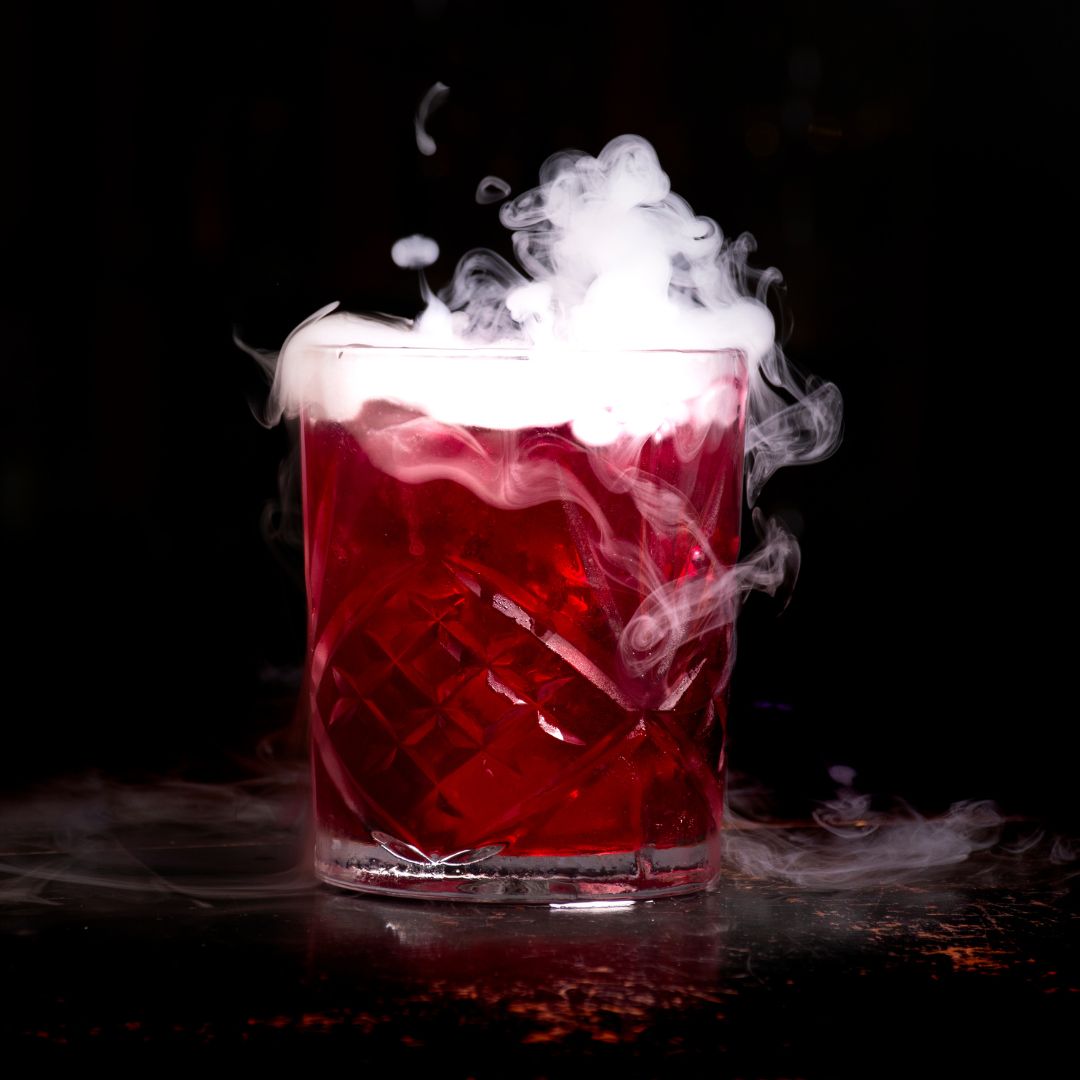
Double, Double Toil & Trouble
Ingredients:
- 1 oz Aberfeldy 12 Single Malt Scotch Whisky
- .5 oz Ardbeg 10 Year Islay Single Malt Scotch
- .5 oz Ancho Reyes Liqueur
- 2 oz spiced apple cider
- 1 oz lemon juice
- .5 oz grenadine, we recommend Liber & Co.
- Ginger Beer
- Crushed ice
Directions:
- Shake the first 6 ingredients with ice in a shaker for 15 seconds or so.
- Pour into a tall glass filled with crushed ice.
- Pour ginger beer over top. Stir gently.
- Garnish with any of a cinammon stick, star anise, orange wheel
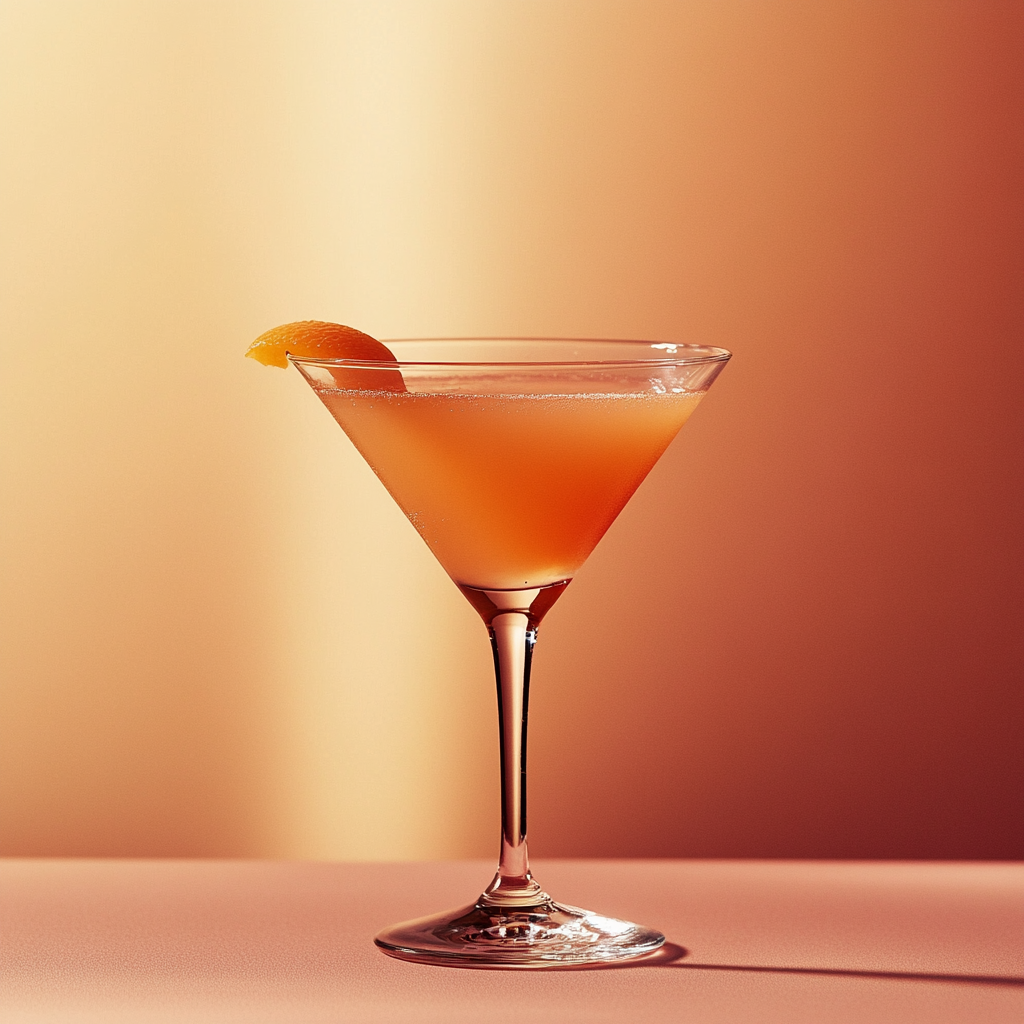
Bermuda Rose
Ingredients:
Directions:
- Add all ingredients to a shaker with ice.
- Shake until very cold.
- Strain into a chilled martini glass.
- Garnish with a slice of fresh apricot
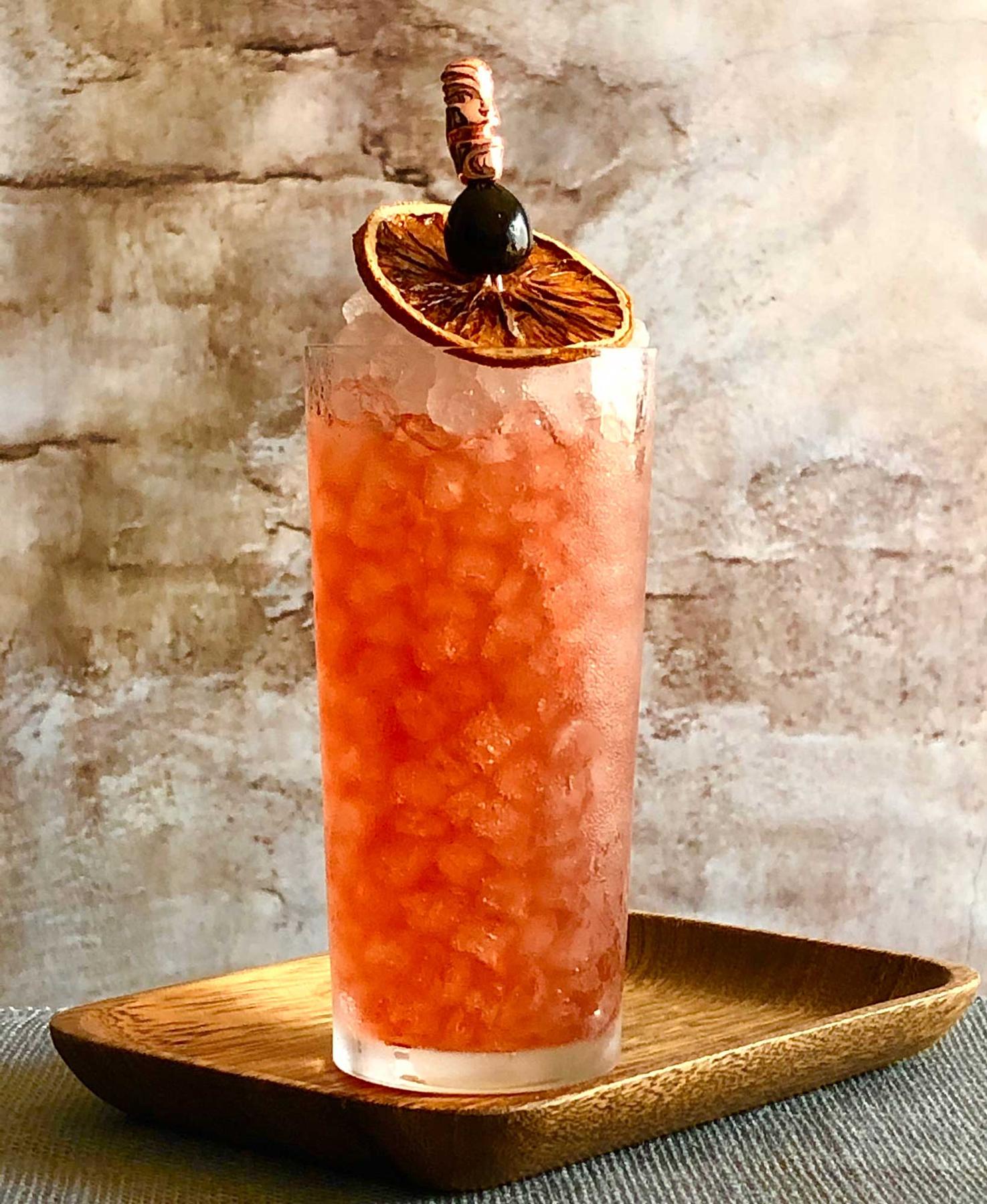
Seaside Frivolity
Ingredients:
Directions:
- Shake all ingredients with ice.
- Pour into a tall glass filled with crushed ice.
- Freestyle garnish of your choice.

Seaside Frivolity
Ingredients:
Directions:
- Shake all ingredients with ice.
- Pour into a tall glass filled with crushed ice.
- Freestyle garnish of your choice.
Learn More About Grenadine
What makes Grenadine unique?
Grenadine stands apart from other fruit syrups through its distinctive pomegranate base, which delivers a complex sweet-tart flavor profile that balances fruity richness with subtle acidity. Unlike simple fruit syrups made from single fruits like cherry or raspberry, authentic grenadine combines pomegranate juice with sugar to create a syrup that's both intensely flavorful and beautifully colored with that signature deep red hue. This unique pomegranate foundation gives grenadine its ability to add both sweetness and depth to cocktails, making it an essential ingredient that can't be easily substituted by other fruit syrups.
How is Grenadine made?
Traditional grenadine starts with fresh pomegranate juice that's slowly simmered with sugar to create a rich, ruby-red syrup with a perfect balance of tart and sweet flavors. The best homemade versions use a 1:1 ratio of pomegranate juice to sugar, sometimes with a splash of lemon juice or orange flower water for complexity. Commercial grenadine often skips the pomegranates entirely, relying on high fructose corn syrup, artificial flavoring, and red dye to mimic the real thing—which explains why so many bar drinks taste flat compared to cocktails made with the genuine article.
How do you drink Grenadine?
Grenadine is almost exclusively used as a cocktail ingredient rather than sipped neat, as its intensely sweet, syrupy consistency and concentrated pomegranate flavor make it overwhelming on its own. You'll find this ruby-red syrup adding color and fruity sweetness to classic cocktails like Tequila Sunrises, Shirley Temples, and Hurricane drinks, plus countless tiki-style and tropical cocktails where its vibrant hue creates those Instagram-worthy layered effects. The bright, festive appearance of grenadine-based cocktails makes them perfect for summer parties, pool gatherings, and holiday celebrations when you want drinks that look as good as they taste.
How do I choose good Grenadine?
Skip the bright red corn syrup bottles from the liquor store and look for real pomegranate grenadine made with actual fruit juice—brands like Liber & Co., Small Hand Foods, or even homemade versions will completely transform your cocktails. Your drink choice should guide your selection: delicate classics like a Pink Lady call for a subtle, balanced grenadine that won't overpower the gin, while bold tiki drinks can handle more robust, tart varieties that stand up to rum and citrus. Read the ingredient list like your cocktail depends on it—because it does.
Nutritional Information
Typical Calorie Range per Ounce: 50-80 calories
Typical Carbohydrate Range per Ounce: 12-20 grams
Typical Sugar Range per Ounce: 12-18 grams
Typically Gluten Free: Yes
Most grenadine syrups are made from pomegranate juice, sugar, and water, making them naturally gluten-free. The calorie and sugar content can vary significantly between brands, with high-fructose corn syrup versions typically containing more calories than those made with cane sugar. Homemade grenadine tends to fall on the lower end of these ranges. Always check the specific product label for exact nutritional information and to confirm gluten-free status, especially if you have celiac disease or severe gluten sensitivity.
Scrolled this far? Your reward? Grenadine Trivia!
- Real grenadine comes from pomegranates, not cherries. The name literally means "from Granada" in French, referencing the Spanish city famous for its pomegranates. That bright red corn syrup stuff you see at most bars? It's basically sugar water with food coloring pretending to be the real deal.
- The original grenadine was actually clear, not red. Authentic pomegranate syrup made from white pomegranate juice was prized in 19th-century bartending. The ruby red color we associate with grenadine today came from marketing departments, not Mother Nature.
- Grenadine was originally a medicine before it became a cocktail ingredient. French pharmacists in the 1800s used concentrated pomegranate syrup to mask the bitter taste of medications. Bartenders discovered this sweet solution and started sneaking it into drinks when customers weren't looking.
- A single bottle of quality grenadine contains the juice of roughly 60 pomegranates. The labor-intensive process of extracting, reducing, and balancing the syrup explains why authentic grenadine costs significantly more than the artificial versions flooding the market.
- Grenadine naturally ferments and can become mildly alcoholic if left unrefrigerated. Traditional recipes relied on this controlled fermentation to develop complex flavors, which is why vintage cocktail recipes often called for "aged" grenadine that had developed its own subtle boozy character.
Higher-proof spirits can be intense. Mix carefully, taste thoughtfully, and enjoy responsibly.

